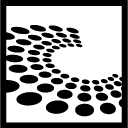26C3 - 26C3 1.15
26th Chaos Communication Congress
Here be dragons
| Speakers | |
|---|---|
|
|
Audrey |
| Schedule | |
|---|---|
| Day | Day 4 - 2009-12-30 |
| Room | Saal1 |
| Start time | 16:00 |
| Duration | 01:00 |
| Info | |
| ID | 3579 |
| Event type | Lecture |
| Track | Making |
| Language used for presentation | English |
| Feedback | |
|---|---|
|
Did you attend this event? Give Feedback |
Photography and the Art of Doing it Wrong

At its heart, photography is a ridiculous hack to make pictures from light. In the 170 years since Talbot and Daguerre, techniques have been cleaned up and simplified. A field that once demanded experimentation and had no clear way of doing it right, now attracts many who haven't a clue why it all works. Innovation and new techniques occur on the edges - they are the beautiful fragments scattered in disaster, the sloppy chaos of the unknown. Discovery happens by doing it wrong. Beyond the traditions, beyond the rules, there be dragons, and they are the best teachers of all.
In this talk, I will discuss the concept of fluency as it relates to photography, and how confidence in the medium is a direct result of doing it all wrong. Broken and inadequate equipment drives quick adaptation, because it has to work (in some definition of work) immediately. What are the absolute essentials of getting this photograph, right now? Right now is all there is.
With fluency comes greater experimentation. Knowing the rules of a medium means knowing how to break them effectively. Experimental artists, like hackers, use the flaws and weaknesses of their medium to bend it to their will. New techniques are often discovered by accident or through questioning "what happens if I...?" Over time, some of these techniques, like solarization and multiple exposures, have become standard. What happens out at the borders where things break, where things are unpredictable? I will share some of my own processes as well as some by other artists, both historical and contemporary.
Early photographers exploited motion blur that resulted from long exposures (half hour exposures were once the norm). Exposing a sheet of film more than once, intentionally or not, results in a composite image. Solarization, a partial darkening of highlight areas in a print or lightening of shadows in a negative, was made famous by the surrealist photographers Lee Miller and Man Ray. Even the corruption of digital files has been used for artistic effect. Something is only really a flaw before a suitable application is understood. To do it wrong, wholeheartedly, is to abandon the myth of perfection and predictibility in favor of discovery.
